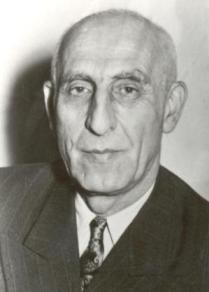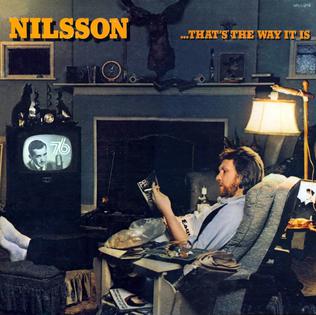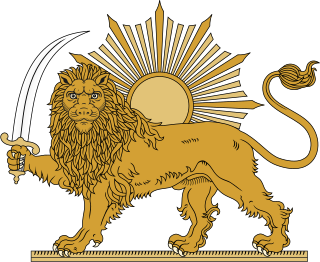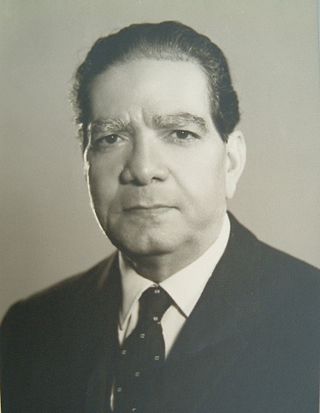
Mohammad Mosaddegh was an Iranian politician, author, and lawyer who served as the 35th Prime Minister of Iran from 1951 to 1953, after appointment by the 16th Majlis. He was a member of the Iranian parliament from 1923, and served through a contentious 1952 election into the 17th Iranian Majlis, until his government was overthrown in the 1953 Iranian coup d'état aided by the intelligence agencies of the United Kingdom (MI6) and the United States (CIA), led by Kermit Roosevelt Jr. His National Front was suppressed from the 1954 election.

Reza Shah Pahlavi was an Iranian military officer, politician, and first Shah of the House of Pahlavi of the Imperial State of Iran and father of the last Shah of Iran. He reigned from 1925 until he was forced to abdicate after the Anglo-Soviet invasion of Iran in 1941. A modernizer, Reza Shah clashed with the Shia clergy, but also introduced many social, economic, and political reforms during his reign, ultimately laying the foundation of the modern Iranian state. Therefore, he is regarded by many as the founder of modern Iran.

Alastair Ian Stewart is a Scottish-born singer-songwriter and folk-rock musician who rose to prominence as part of the British folk revival in the 1960s and 1970s. He developed a unique style of combining folk-rock songs with tales of characters and events from history.

Black Friday is the name given to an incident occurring on 8 September 1978 in Iran, in which 64, or at least 100 people were shot dead and 205 injured by the Pahlavi military in Jaleh Square in Tehran. According to the military historian Spencer C. Tucker, 94 were killed on Black Friday, consisting of 64 protesters and 30 government security forces. The deaths were described as the pivotal event in the Iranian Revolution that ended any "hope for compromise" between the protest movement and the regime of Shah Mohammad Reza Pahlavi.

The 1953 Iranian coup d'état, known in Iran as the 28 Mordad coup d'état, was the U.S.- and British-instigated, Iranian army-led overthrow of the democratically elected Prime Minister Mohammad Mosaddegh in favor of strengthening the monarchical rule of the shah, Mohammad Reza Pahlavi, on 19 August 1953. It was aided by the United States and the United Kingdom. The Shi'a clergy also played a considerable role.

The Bakhtiari are a Lur tribe from Iran. They speak the Bakhtiari dialect of the Luri language.

...That's the Way It Is is the thirteenth album by American singer Harry Nilsson, released in 1976 on RCA Records. Aside from two original songs, the album consists of cover tunes.
In the Western world, Persia was historically the common name used for Iran. On the Nowruz of 1935, Reza Shah officially asked foreign delegates to use the Persian term Iran, the endonym of the country, in formal correspondence. Subsequently, the common adjective for citizens of Iran changed from Persian to Iranian. In 1959, the government of Mohammad Reza Pahlavi, Reza Shah's son, announced that both "Persia" and "Iran" could be used interchangeably, in formal correspondence. However, the issue is still debated among Iranians.

Abdolhossein Teymourtash was an influential Iranian statesman who served as the first minister of court of the Pahlavi dynasty from 1925 to 1932, and is credited with playing a crucial role in laying the foundations of modern Iran in the 20th century.

Laurence Ivor Juber is an English musician, fingerstyle guitarist and studio musician. He played guitar in the rock band Wings from 1978 to 1981.

The Rolls-Royce Phantom V is a large four-door limousine produced by Rolls-Royce Limited from 1959 to 1968. Based on the Silver Cloud II, it shares a V8 engine and General Motors Hydra-Matic automatic gearbox with that model. Rolls-Royce assembled the cars' chassis and drivetrains with bodies made to standard designs by coachbuilders Park Ward and James Young, former vendors absorbed by Rolls-Royce.

The Lurs are an Iranian people living in western Iran. The four Luri branches are the Bakhtiari, Mamasani, Kohgiluyeh and Lur proper, who are principally linked by the Luri language.

The Lion and Sun is one of the main emblems of Iran (Persia), and was an element in Iran's national flag until the 1979 revolution and is still commonly used by opposition groups of the Islamic Republic government. The motif, which illustrates ancient and modern Iranian traditions, became a popular symbol in Iran in the 12th century. The lion and sun symbol is based largely on astronomical and astrological configurations: the ancient sign of the sun in the house of Leo, which itself is traced back to Babylonian astrology and Near Eastern traditions.

Pahlevani and zourkhaneh rituals is the name inscribed by UNESCO for varzesh-e pahlavāni or varzesh-e bāstāni, a traditional system of athletics and a form of martial arts originally used to train warriors in Iran (Persia), and first appearing under this name and form in the Safavid era, with similarities to systems in adjacent lands under other names. Outside Iran, zoorkhanehs can now also be found in Azerbaijan, and Afghanistan, and were introduced into Iraq in the mid-19th century by the Iranian immigrants, where they seem to have existed until the 1980s before disappearing. It combines martial arts, calisthenics, strength training and music. It contains elements of pre-Islamic and post-Islamic culture of Iran with the spirituality of Persian Shia Islam and Sufism. Practiced in a domed structure called the zurkhāneh, training sessions consist mainly of ritual gymnastic movements and climax with the core of combat practice, a style of folk wrestling called koshti pahlavāni.

Mohammad Reza Pahlavi, commonly referred to in the Western world as Mohammad Reza Shah, was the last Iranian monarch. He began ruling the Imperial State of Iran after succeeding his father Reza Shah in 1941 and remained in power until he was overthrown by the Iranian Revolution, which abolished the country's monarchy and established the present-day Islamic Republic of Iran in 1979. Owing to his recognition and status as Iran's final monarch, he is usually called the Shah. In 1967, he took up the title Shahanshah and held several others, including Aryamehr and Bozorg Arteshtaran.

The Capitol Years is a compilation album of the American folk music group the Kingston Trio's recordings from their time with the Capitol Records label.

Corruption is a serious problem in Iran, being widespread, mostly in the government. Reformists and conservatives alike – routinely criticize corruption in the government.

Abbas Aram (1906–1985) was an Iranian diplomat and served as foreign minister for two terms between 1959 and 1960 and between 1962 and 1966. In addition, he was the ambassador of Iran to various countries, including Iraq, the United Kingdom and China.

Ahmad Shahi Pavilion is located in the Niavaran Complex, in the north of Tehran, Iran. Ahmad Shahi Pavilion is beside Mohammad Reza Pahlavi's dwelling, Niavaran Palace and the oldest building there, Sahebgharaniyeh Palace. The Pavilion was built at the end of the Qajar era as Ahmad Shah's dwelling among Niavaran garden. Ahmad Shahi Pavilion was constructed as a two-story building in the surrounds of 800 m2 of land.this Pavilion built in 1910s


















